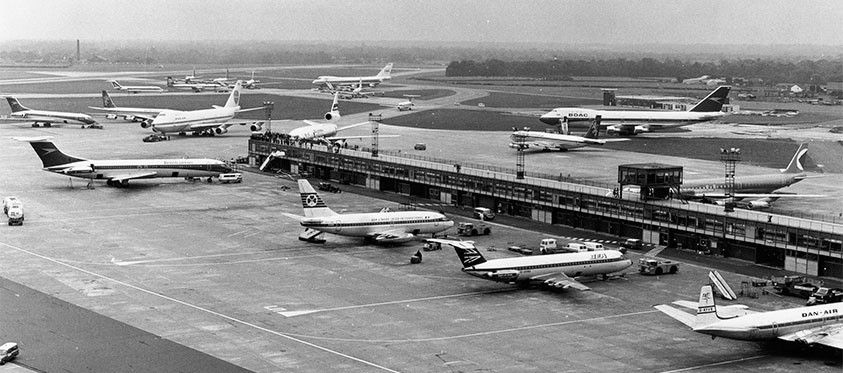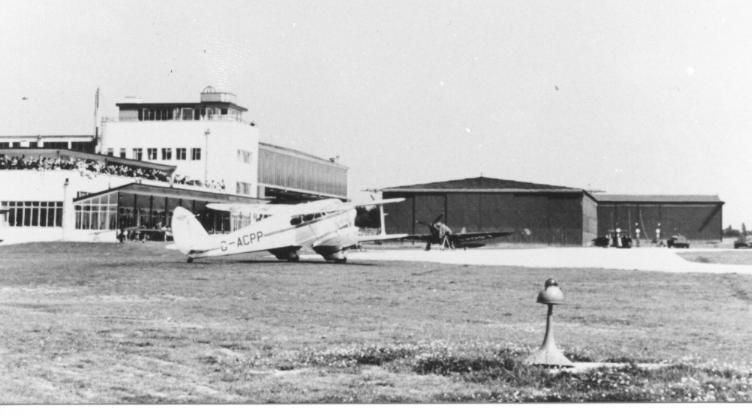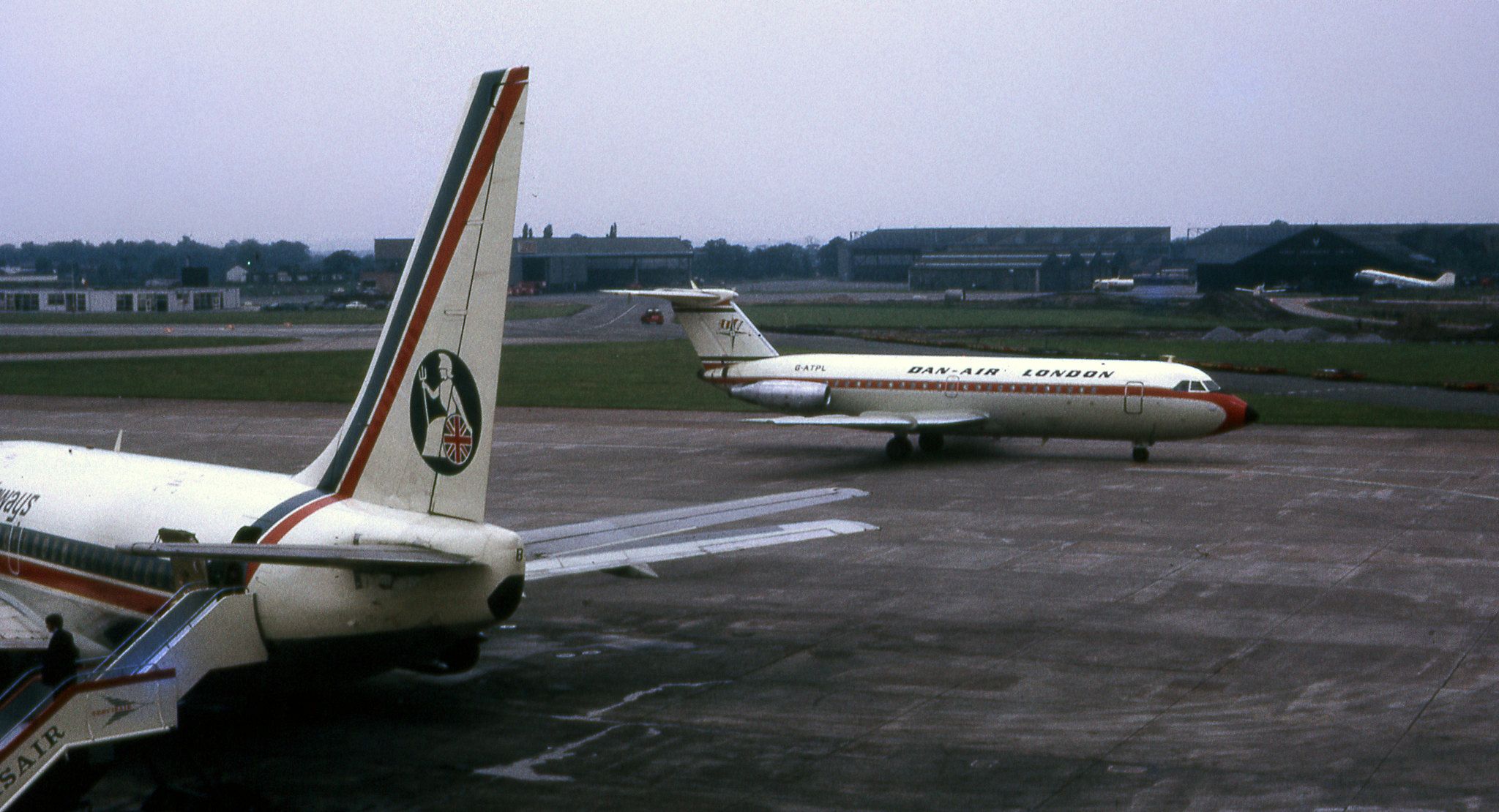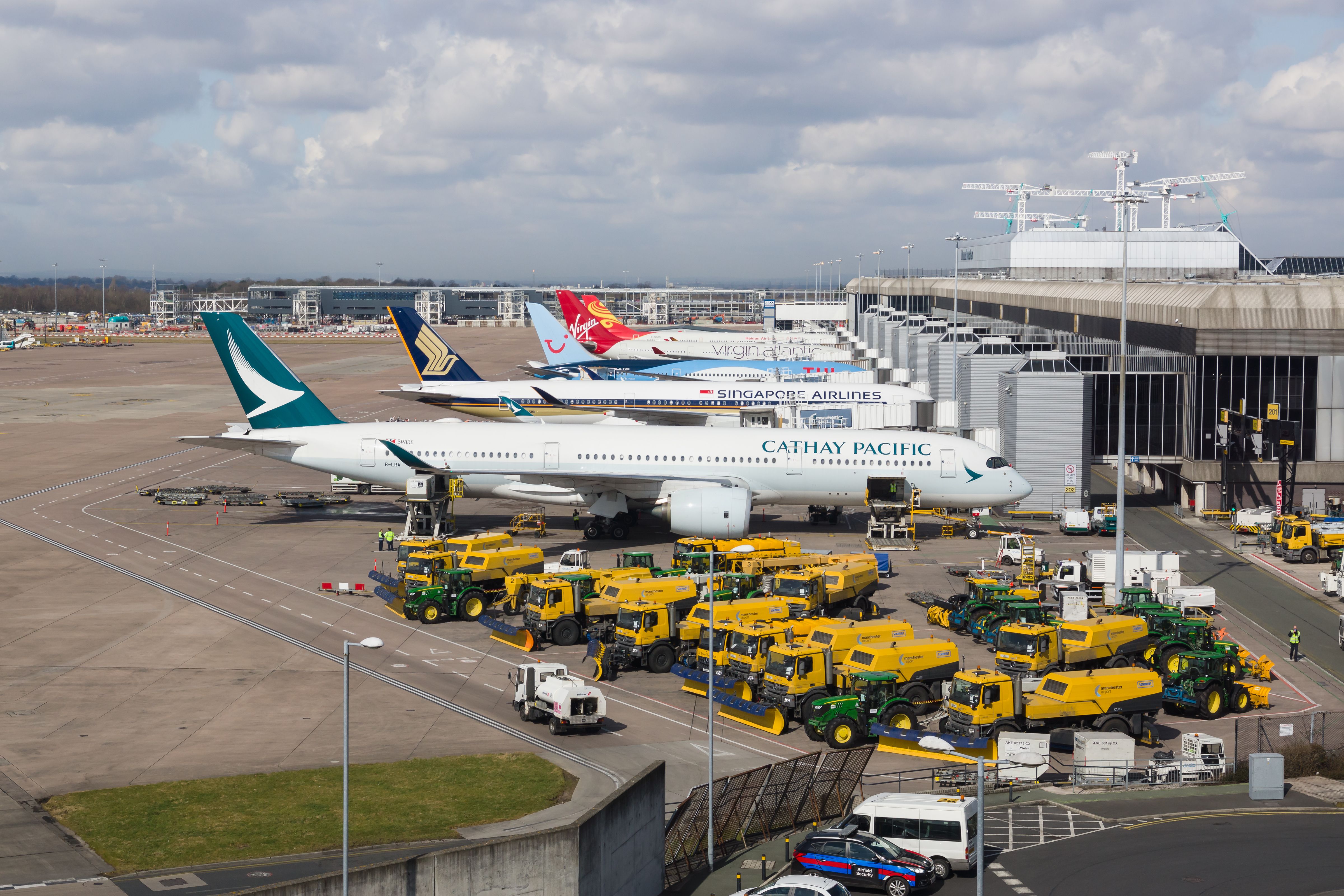85 Years Ago Today Manchester Airport Celebrated Its Official Opening

Each year, 27 million visitors walk through the gates of Manchester Airport. Home to over 60 airlines flying to more than 200 destinations around the globe, it is the UK’s third-busiest airport by passenger traffic and fourth-busiest by aircraft movements.
Early years
In 1930, an aerodrome was established in Barton, a suburb of Greater Manchester. However, within four years, it was evident that the facility was too small to cater to the growing popularity of air travel. Thus, a second site was selected in the village of Ringway, with construction commencing in November 1935.
On June 25, 1938, Manchester Airport – then Ringway Airport – was officially inaugurated with a public air display. Two days later, KLM operated the airport’s first scheduled flight, flying a Douglas DC-2 to Amsterdam. Within the first 14 months, 7,600 passengers had passed through Ringway (fun fact: today, this figure is equivalent to the passenger traffic on a summer morning!).
With the onset of World War II, the airport’s significance expanded dramatically. On September 1, 1939, the last scheduled flight took off from Manchester Airport before the work broke out. The airport then went on to play a vital role in military operations, serving as a base for aircraft production, maintenance, and training.
After the war, Manchester Airport experienced rapid growth and expansion. By 1947, passenger traffic tripled to over 34,000 a year. In the late 1940s and early 1950s, the airport’s infrastructure underwent significant development, with expanded terminal facilities and an extended runway. It was also during this time that the airport began 24-hour operations, handling 163,000 passengers yearly by 1952.
Soaring into the Jet Age and beyond
The advent of the jet age in the 1960s brought about another wave of transformation for Manchester Airport. The introduction of jet aircraft allowed for longer-haul flights, enabling the airport to expand its reach to more distant destinations. In 1969, the runway was extended to 9,006 feet (2,745 meters), allowing jets to take off to destinations as far away as Canada with a full payload.
In the following decades, Manchester Airport witnessed a continuous process of modernization, with the construction of new terminals, increased capacity, and improved passenger amenities. At the forefront of embracing technological advancements, a new intercontinental pier was opened to handle Boeing 747s, and, for the first time, aerobridges connected passengers directly to the aircraft.
As the 21st century unfolded, Manchester Airport solidified its position as a global hub for travel and commerce. A second terminal was opened, and a second runway was built, making it the only airport outside of London with two full-length runways.
Manchester Airport today
Today, the airport boasts three passenger terminals, handling millions of passengers each year. Manchester Airport’s expansion has not only benefited the local economy but also facilitated cultural exchange, tourism, and business growth within the Greater Manchester region.
Photo: David Pimborough | Shutterstock
Looking ahead, ambitious plans are underway at Manchester Airport, including a $541-million investment in facilities, which will see improvements to Terminal 2, airfield upgrades, and an enhanced passenger experience across the airport. Egyptair and easyJet have also respectively announced new routes from Cairo and to Istanbul.
From humble beginnings to becoming a bustling global hub, Manchester Airport has played a pivotal role in shaping the aviation landscape. As it continues to evolve, adapt, and embrace the future, Manchester Airport remains an essential gateway connecting people, businesses, and cultures, reaffirming its status as an aviation icon in the UK and beyond.
Source: Manchester Airport
















